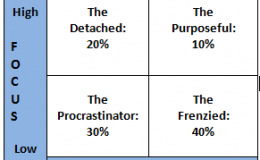Bad Leadership and the Baboon in the Corner Office
What can we learn from bad leadership and CEO failures? Most newly appointed leaders start out looking pretty good. Yet behind every failed business is an example of bad leadership.
The human animal resembles baboons who live and work in small groups where they seek out an alpha male to provide safety and security.
As members of an office tribe, we often defer to strong personalities, usually but not always males, who have proven their strength and capacity to lead.
However, in human groups, it’s not always the most powerful, chest-thumping males who dominate. Although we often prefer the hero-leader who is a genius at business results, we also want leaders who have our best interests at heart….leaders who won’t fail, who won’t lead the business to bankruptcy.
Leadership doesn’t happen in a vacuum. There is no leadership without followers. No matter your position in a company, you can become aware when leadership practices are ineffective — or worse — unethical.
Barbara Kellerman is a Harvard Business professor who has published many books about leadership gone awry. In Bad Leadership, she defines seven kinds of bad leadership. Do you see any of these tendencies in the people you work with and for?
- Incompetent
- Rigid
- Intemperate
- Callous
- Corrupt
- Insular
- Evil
Corporate leaders are being pushed out in record numbers. In 2002, 100 CEOs of the world’s 2,500 largest companies were replaced – almost four times the number in 1995. The business press loves to write extensively whenever they find failed leaders.
What can be done? What if you find yourself working for a baboon of a boss? Kellerman and her research on bad leadership suggests several steps:
- First, we cannot stop or slow bad leadership by changing human nature. No amount of preaching or sermonizing, no exhortations to virtuous conduct, uplifting thoughts, or wholesome habits, will obviate the fact that even though our behavior may change, our nature is constant.
- Second, we cannot stop or slow bad leadership without stopping and slowing bad followership. If we have learned nothing else… we have learned that leaders and followers are interdependent.
- Finally, we cannot stop or slow bad leadership by sticking our heads in the sand. Amnesia, wishful thinking, lies we tell as individuals and organizations, and all the other mind games we play to deny or distort reality get us nowhere. Avoidance inures us to the costs and casualties of bad leadership, and that is why it festers, virtually unabated.
Character counts. Character defects start to show when the stress gets bad and the stakes are high. Bad decisions come from incomplete information and a lack of adequate input from followers who may not feel secure in speaking up or pushing back. Leaders need followers to participate actively rather than passively. Which also means that good leadership creates a space for dissent and differing opinions.
If your company is starting to stagnate or is in decline, start your review at the top. One of my favorite sayings is “a fish rots from the head down.” What do you think?








